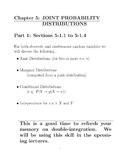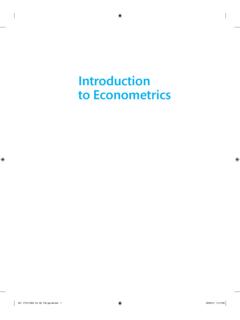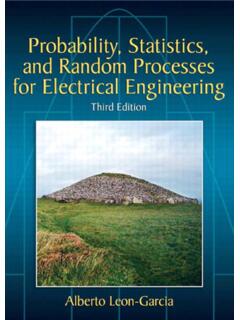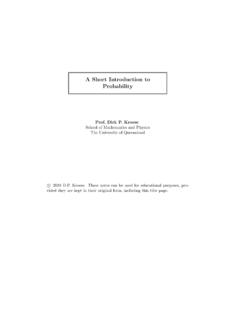Transcription of A FIRST COURSE IN PROBABILITY - مزیت استراتژیک
1 A FIRST COURSE IN PROBABILITYThis page intentionally left blank A FIRST COURSE IN PROBABILITYE ighth EditionSheldon RossUniversity of Southern CaliforniaUpper Saddle River, New Jersey 07458 Library of Congress Cataloging-in-Publication DataRoss, Sheldon FIRST COURSE in PROBABILITY / Sheldon Ross. 8th bibliographical references and : 978-0-13-603313-4 ISBN-10: 0-13-603313-X1. Probabilities Textbooks. I. dc222008033720 Editor in Chief, Mathematics and Statistics:Deirdre LynchSenior Project Editor:Rachel S. ReeveAssistant Editor:Christina LepreEditorial Assistant:Dana JonesProject Manager:Robert S. MerenoffAssociate Managing Editor:Bayani Mendoza de LeonSenior Managing Editor:Linda Mihatov BehrensSenior Operations Supervisor:Diane PeiranoMarketing Assistant:Kathleen DeChavezCreative Director:Jayne ConteArt Director/Designer:Bruce KenselaarAV Project Manager:Thomas BenfattiCompositor:Integra Software Services Pvt.
2 Ltd, Pondicherry, IndiaCover Image Credit:Getty Images, Inc. 2010, 2006, 2002, 1998, 1994, 1988,1984, 1976 by Pearson Education, Inc.,Pearson Prentice HallPearson Education, Saddle River, NJ 07458 All rights reserved. No part of this book may be reproduced, in anyform or by any means, without permission in writing from the Prentice Hall is a trademark of Pearson Education, in the United States of America10987654321 ISBN-13: 978-0-13-603313-4 ISBN-10: 0-13-603313-XPearson Education, Ltd.,LondonPearson Education Australia PTY. Limited,SydneyPearson EducationSingapore, Pte. LtdPearson Education North Asia Ltd,Hong KongPearson Education Canada, Ltd.,TorontoPearson Educaci on de Mexico, de Education Japan,TokyoPearson Education Malaysia, Pte. LtdPearson EducationUpper Saddle River, New JerseyFor RebeccaThis page intentionally left blank ContentsPrefacexi1 Combinatorial Introduction.
3 The Basic Principle of Counting .. Combinations .. Multinomial Coefficients .. The Number of Integer Solutions of Equations .. 12 Summary .. 16 Theoretical Exercises .. 18 Self-Test Problems and Exercises .. 202 Axioms of Introduction .. Axioms of PROBABILITY .. Some Simple Propositions .. Sample Spaces Having Equally Likely PROBABILITY as a Continuous Set Function .. PROBABILITY as a Measure of Belief .. 48 Summary .. 50 Theoretical Exercises .. 54 Self-Test Problems and Exercises .. 563 Conditional PROBABILITY and Introduction .. Conditional Probabilities .. Bayes s Formula .. ( |F) Is a PROBABILITY .. 93 Summary .. 102 Theoretical Exercises .. 110 Self-Test Problems and Exercises.
4 1144 Random Random Discrete Random Variables .. ExpectedValue .. Expectation of a Function of a Random Variance .. The Bernoulli and Binomial Random Variables .. Properties of Binomial Random Computing the Binomial Distribution Function .. The Poisson Random Computing the Poisson Distribution Function .. Other Discrete PROBABILITY Distributions .. The Geometric Random Variable .. The Negative Binomial Random The Hypergeometric Random Variable .. TheZeta(orZipf) Expected Value of Sums of Random Variables .. Properties of the Cumulative Distribution Function .. 168 Summary .. 172 Theoretical Exercises .. 179 Self-Test Problems and Exercises .. 1835 Continuous Random Introduction .. Expectation and Variance of Continuous Random The Uniform Random Variable.
5 Normal Random Variables .. The Normal Approximation to the Binomial Distribution .. Exponential Random Variables .. Hazard Rate Other Continuous Distributions .. TheGammaDistribution .. TheWeibullDistribution .. TheBetaDistribution .. The Distribution of a Function of a Random Variable .. 219 Summary .. 224 Theoretical Exercises .. 227 Self-Test Problems and Exercises .. 2296 Jointly Distributed Random JointDistributionFunctions .. Independent Random Variables .. Sums of Independent Random Variables .. Identically Distributed Uniform Random Variables .. Gamma Random Variables .. Normal Random Variables .. Poisson and Binomial Random Geometric Random Conditional Distributions: Discrete Case .. Conditional Distributions: Continuous Case.
6 OrderStatistics .. Joint PROBABILITY Distribution of Functions of Random Variables .. Exchangeable Random Variables .. 282 Summary .. 287 Theoretical Exercises .. 291 Self-Test Problems and Exercises .. 293 Contentsix7 Properties of Introduction .. Expectation of Sums of Random Variables .. Obtaining Bounds from Expectationsvia the Probabilistic Method .. The Maximum Minimums Identity .. Moments of the Number of Events that Occur .. Covariance, Variance of Sums, and Correlations .. Conditional Expectation .. Computing Expectations by Computing Probabilities by Conditional Variance .. Conditional Expectation and Prediction .. Moment Generating Joint Moment Generating Functions .. Additional Properties of Normal Random Variables.
7 The Multivariate Normal Distribution .. The Joint Distribution of the Sample Meanand Sample Variance .. General Definition of Expectation .. 369 Summary .. 373 Theoretical Exercises .. 380 Self-Test Problems and Exercises .. 3848 Limit Introduction .. Chebyshev s Inequality and the Weak Law of LargeNumbers .. TheCentralLimitTheorem .. The Strong Law of Large Numbers .. Other Bounding the Error PROBABILITY When Approximating a Sum ofIndependent Bernoulli Random Variables by a PoissonRandom 410 Summary .. 412 Theoretical Exercises .. 414 Self-Test Problems and Exercises .. 4159 Additional Topics in The Poisson Process .. Surprise, Uncertainty, and Entropy .. Coding Theory and Entropy .. 428 Summary .. 434 Problems and Theoretical Exercises.
8 435 Self-Test Problems and Exercises .. 436xContents10 Introduction .. General Techniques for Simulating Continuous Random Variables .. The Inverse Transformation Method .. The Rejection Simulating from Discrete Distributions .. Variance Reduction Techniques .. Use of Antithetic Variables .. Variance Reduction by Conditioning .. Control Variates .. 452 Summary .. 453 Self-Test Problems and Exercises .. 455 Answers to Selected Problems457 Solutions to Self-Test Problems and Exercises461 Index521 Preface We see that the theory of PROBABILITY is at bottom only common sense reducedto calculation; it makes us appreciate with exactitude what reasonable minds feelby a sort of instinct, often without being able to account for is remarkablethat this science, which originated in the consideration of games of chance, shouldhave become the most important object of human most importantquestions of life are, for the most part, really only problems of PROBABILITY .
9 So saidthe famous French mathematician and astronomer (the Newton of France ) Pierre-Simon, Marquis de Laplace. Although many people feel that the famous marquis,who was also one of the great contributors to the development of PROBABILITY , mighthave exaggerated somewhat, it is nevertheless true that PROBABILITY theory has becomea tool of fundamental importance to nearly all scientists, engineers, medical practi-tioners, jurists, and industrialists. In fact, the enlightened individual had learned toask not Is it so? but rather What is the PROBABILITY that it is so? This book is intended as an elementary introduction to the theory of probabilityfor students in mathematics, statistics, engineering, and the sciences (including com-puter science, biology, the social sciences, and management science) who possess theprerequisite knowledge of elementary calculus.
10 It attempts to present not only themathematics of PROBABILITY theory, but also, through numerous examples, the manydiverse possible applications of this 1 presents the basic principles of combinatorial analysis, which are mostuseful in computing 2 handles the axioms of PROBABILITY theory and shows how they can beapplied to compute various probabilities of 3 deals with the extremely important subjects of conditional probabilityand independence of events. By a series of examples, we illustrate how conditionalprobabilities come into play not only when some partial information is available,but also as a tool to enable us to compute probabilities more easily, even whenno partial information is present. This extremely important technique of obtainingprobabilities by conditioning reappears in chapter 7, where we use it to concept of random variables is introduced in Chapters 4, 5, and 6.








